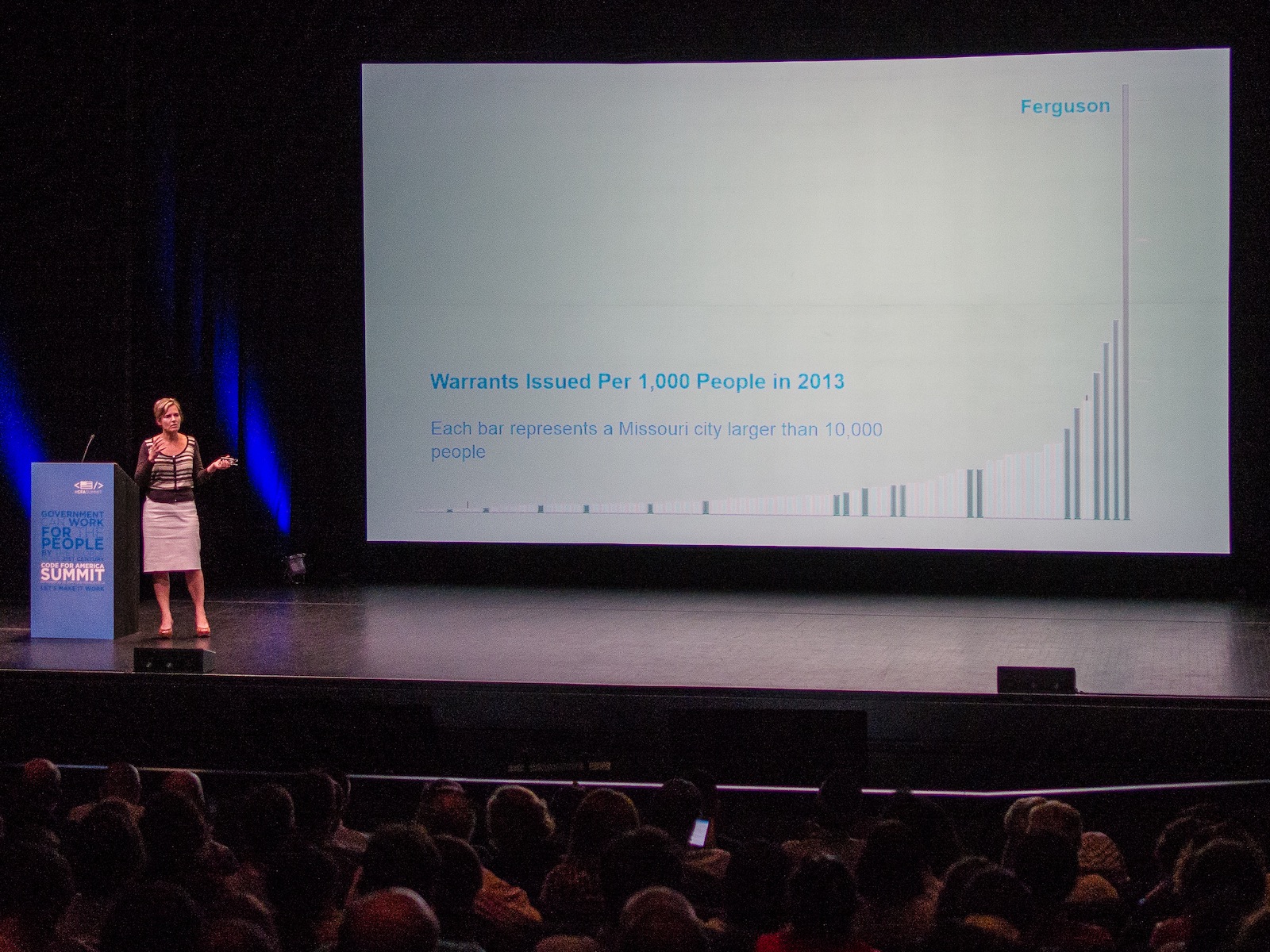

Last night, a St. Louis grand jury decided not to indict Ferguson police officer, Darren Wilson, for the shooting death of Michael Brown. If there is a silver lining to this decision, it’s that the discourse around these events has been predictably emotional, but perhaps unpredictably thoughtful. I’ve seen and been a part of a number of conversations that have asked hard, critical, systemic questions about why this happened and what needs to change.
Why is it that black men are 21 times more likely to get shot dead by police than white men?
Why did the Ferguson verdict feel predictable, despite the mountain of evidence against Wilson?
What can we do to improve the system?
Code for America is an amazing group that organizes a powerful network of technologists, designers, data scientists, and concerned citizens to help create a government that is truly for and by its people. Shortly after the shootings, its staff started asking what it could have done to prevent another Ferguson. As Jen Pahlka, Code for America’s Executive Director, shared at its annual summit this past September, there were clear, data-driven indicators that something was majorly amiss in Ferguson.
Simply sharing data in this form doesn’t solve any problems. The trust-building and structural changes that Jen described are the hard nuts that need to be cracked. But having the data so clearly and powerfully expressed in real-time would, at minimum, have jolted us. It would have been clear, indefatigable evidence that this is something to which we need to pay attention.
The low-hanging fruit of systems change is to provide better, faster feedback mechanisms. Technology in today’s networked world offers one way to do that. But what ultimately matters when it comes to feedback isn’t information. It’s good, old-fashioned, person-to-person connectivity. It’s our need to talk to each other, to see each other as humans, to really understand what it is to walk in each other’s shoes.
We don’t need technology to have that conversation. We don’t even need new people (although that would help a lot). Start with the people around you. Talk to them about Michael Brown, about Darren Wilson, about tragedy and injustice, but also about the world we want to live in. Talk to them about what it’s like to be rich or poor, black or white or Asian or Latino in this country. Most importantly, talk about love — what it looks like, what it means to you and them, and what the world would be like if there were more of it.
My friend, Lauren Crew, a brilliant photographer who documented the protests in Oakland last night, shared these wonderful words from Richard Rorty:
My sense of the holy… is bound up with the hope that someday, any millennium now, my remote descendants will live in a global civilization in which love is pretty much the only law.
